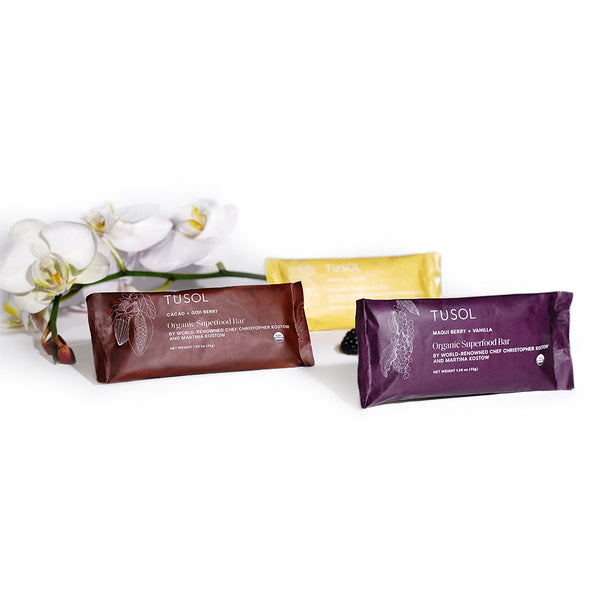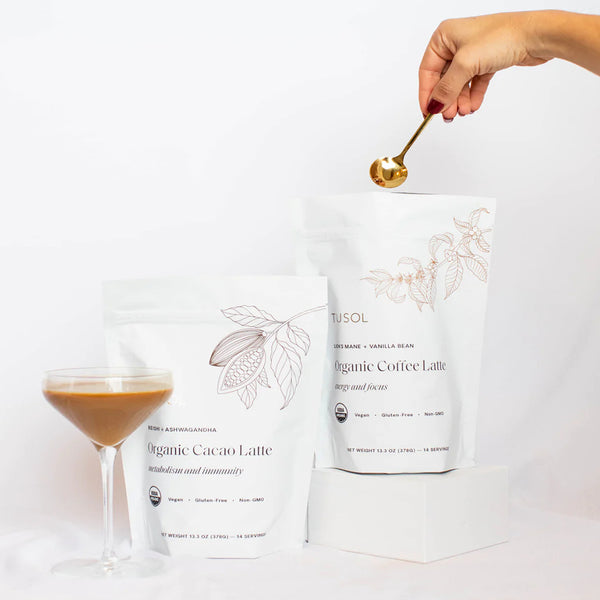These days, we don’t have to leave our homes to forage for drinking water. Municipal water is readily available to us thanks to a massive piping infrastructure right beneath our feet. Some of these pipes were built with cast iron, and have remained underground since the Lincoln era, 150 years ago.1
"An additional 10 million old lead pipes remain in our piping infrastructure as well, despite the fact that Congress banned the use of lead 30 years ago"
Many of these pipes are now broken, rusted, and are repeatedly contaminating our water as it travels alongside sewage ducts to millions of households nationwide .2
The simple truth is that water is one of the most – if not the most – important nutrients we consume. Water is the fundamental basis of all life, the foundation of all the plant’s ecosystems, and the reason why we are here today. Half of our body weight is comprised of water. As humans we can live a few weeks without food, but only a few days without water.
Therefore, it’s crucial to know exactly what’s in the water we drink daily.
Consider the Source
It goes without saying that water naturally comes from the earth, but hardly anyone today gets their water directly from natural sources. Rather, water is primarily transported through third parties, frequently as bottled water or municipal (tap) water.
The water in your faucet
Most cities today recycle their tap water directly from the sewer. To convert it back to that clear, sparkly liquid we recognize as water, sewage water undergoes a series of decontamination treatments. Such treatments utilize industrial chemicals like chlorine to get rid of the countless toxic pathogens that reside in the sewer. Surviving this treatment process are a selection of stubborn pathogens, viruses and bacteria. In addition there are residual amounts of the countless pharmaceuticals that are flushed down the toilet daily. These pharmaceuticals are not thoroughly removed by the decontamination treatment.
Tap water in Philadelphia tested positive for the presence of 56 different pharmaceuticals including birth control, steroids and anti-depressants. These traces of pharmaceuticals are residual from human waste in our sewage system. 3 We repeatedly hear from doctors about the risks of mixing certain medicines, and while researchers do not yet understand the exact risks associated with decades of persistent exposure to low levels of pharmaceuticals in water, recent studies have confirmed this exposure has detrimental effects on human cells and wildlife.
What are some of the common industrial chemicals in your water?
Chlorine
When chlorine was first introduced into the water system in the 19th century, people had long battled a variety of diseases that were transmitted through water.
Some of these diseases were cholera, dysentery, and typhoid. But there is a big side effect to that: Americans now are consuming 300-600 times the amount of chlorine that is safe to ingest.
Why is chlorine in drinking water dangerous? Because when chlorine mixes with even miniscule amounts of organic compounds that are very often found in water, harmful by-products, called Trihalomethanes (THMs) are produced.
These by-products produce free radicals in the body, which trigger cell damage, and are highly carcinogenic even in small amounts. Every time we shower, we are repeatedly exposed to these THMs. This happens through steam inhalation, and proven to have serious negative effects on the body.
The authors of a 2009 study 4 published in the journal Science of the Total Environment wrote:
"Through inhalation and skin contact during showering and bathing [THMs] may pose risks to human health. During showering and bathing, warm water (95 to 113 degrees Fahrenheit) is generally used. Warming of chlorinated supply water may increase THMs formation through enhanced reactions between organics and residual chlorine. Exposure assessment using THMs concentrations in cold water may under-predict the possible risks to human health. As scientists have looked into the potentially dangerous effects of chlorine, use of the chemical has been linked to a wide range of ailments, including various cancers, reproductive problems, problems with the immune system, and heart attacks"
Other problems with chlorine stem from the very reason it’s so useful – it’s ability to kill bacteria. When chlorine is introduced into water, it kills pathogenic bacteria. But when it’s introduced into the human body, it destroys our beneficial gut bacteria where an estimated 70% of our immune system operates.
Recent research increasingly points us towards the great importance of healthy and flourishing gut bacteria. Scientists have found a connection between a lack of these valuable microbes in our digestive system and the presence of a wide range of diseases. These include obesity, irritable bowel syndrome, type 2 diabetes, colorectal cancer, autism, asthma, and certain autoimmune diseases.
In addition to these diseases, poor gut health can lead to conditions such as gas, bloating, diarrhea, constipation, and abdominal pain.
Now, however, it seems like these advancements have come at a price. While we recognize and applaud the benefits chlorine has brought to us in the past. It’s time we also protect ourselves from the harms of drinking chlorine – particularly because that turns out to be a pretty easy thing to do for your health and the health of your family. Don’t worry I will explain how, stay with me; let’s continue now with fluoride, another toxin.
Fluoride
Since the 1940s, fluoride has been added to municipal water supplies throughout the U.S. to prevent tooth decay, and cavities. Despite the addition to fluoride, most everyone you know will suffer from at least one cavity in their life-time. Evidence is accumulating that in an era of fluoridated toothpastes and other consumer products that improve dental health, the potential risks from consuming fluoridated water may outweigh the benefits for some individuals. Last summer, for the first time in 53 years, the U.S. Public Health Service lowered its recommended levels of fluoride in drinking water. 5 The mounting evidence has shown the following in countless studies:
Excess fluoride may cause diabetes
Excess fluoride also results in decreased glucose tolerance causing in some cases diabetes and obesity6
Fluoride causes skeletal fluorosis
When fluoride gets ingested it binds to hydrochloric acids in the stomach, the combination of the two make Hydroflouride, when it reacts with calcium it then forms an insoluble salt crystal called chlorine fluoride making the bones more dense but with less strength and very easy to break like-crystal, which then becomes part of the bone matrix. This is what happens to our teeth. Fluoride doesn’t have the same flexibility that calcium does; it tends to create brittleness, or more breakable teeth or bones.7
Fluoride throws off minerals in the body
Hypocalcemia and hyperkalemia are low/high levels of calcium in the blood. These result in electrolyte (mineral) imbalance and eventually there is disturbances in cardiac rhythm. Furthermore, gut formed calcium-fluoride may be responsible for hypocalcemia encouraging thyroid hormone imbalance, osteoporosis, osteomalacia and, perhaps, lowered level of phosphorus.8
The pineal gland might as well just be a crystal
The pineal gland is best known for its role in producing the hormone melatonin from serotonin associated with wake/sleep patterns and seasonal/circadian rhythms. Fluoride has been shown to calcify tissue that is exposed to a high volume of blood flow. The pineal gland is a major target for fluoride accumulation in humans. Fluoride can turn the pineal gland into a crystal called (hydroxyapatite crystals) containing the highest accumulation of fluoride into the body even higher than either bone or teeth. 9 The results: insomnia, depression, low energy, and cognitive issues.
Accelerated sexual maturity in females
In the United States, children are reaching the age of puberty at earlier ages than ever before — a trend that carries health consequences, including a heightened risk for breast cancer. Some evidence indicates that fluoride could be a contributing factor to this trend. In animal studies, for example, fluoride exposure has been found to cause a decrease in the amount of circulating melatonin. This lead to an accelerated sexual maturation in females. Another study first published a fluoridation safety experiment in New York, the authors found that girls living in a fluoridated community reached puberty five months earlier than girls living in a non-fluoridated community. 10
Fluoride is a neurotoxin and might cause lower IQ in children
Fluoride can affect the central nervous system 11 by crossing the blood brain barrier prior to birth. Children ingesting high levels of fluoride more than 2ppm scored more poorly on intelligence tests. These studies compared children ingesting lower amounts of fluoride to less than 1ppm.
Another study found that children under 6 are more vulnerable to fluoride and might consume excess fluoride since most dental products for children are flavored.
A strip of children’s toothpaste contains 1,000 ppm of fluoride.

Plastic Bottles
It is well known that plastics are bad for the environment and we are now becoming aware of the extent in which they can hurt our health.
In 2018 The World Health Organization (WHO) announced a review into the potential risks of plastic in drinking water. After a new examination of some of the world’s most popular bottled water brands they found that more than 90% contained tiny pieces of plastic.
The study, analysis of 259 bottles from 19 locations in nine countries across 11 different brands found an average of 325 plastic particles for every liter of water being sold. One bottle of Nestlé Pure Life, concentrations were as high as 10,000 plastic pieces per liter of water. Of the 259 bottles tested, only 17 were free of plastics, according to the study by Orb Media.12
The main target for criticism is Bisphenol A (BPA), an organic synthetic compound widely used as a starting material in plastics.
There is indication that it seeps out of the bottle into the water and causes issues such as diabetes, obesity, high blood pressure and cancer, amongst many others. The chemical is an endocrine disruptor, which mimics the effect of estrogen in the human body.
Today you may find plastic labeled as BPA free, although this is fairly new trend, coming into the market within the last few years. It’s important to note that when chemicals are removed from the market, they're often replaced quickly by others that not only look similar—but act similarly in our bodies. Glass bottled water is very expensive, but glass is the safer, more environmental way to go.
Water Filters
A Brita pitcher unfortunately is not going to help clean the approximate 316 contaminants found in average tap water around the US. You need a series of filters to do that. Simply look at the label of a Brita filter and it will tell you “Reduces chlorine taste & odor” does not say it removes it. Water is capable of dissolving a variety of different substances, which is why it is such a good solvent. And, water is called the "universal solvent" because it dissolves more substances than any other liquid --it oxidizes metals quite quickly.
Pure H2O does not exist in a natural setting. When you remove the minerals and organism that are naturally found in water like in distilled water, and reverse osmosis water, then it becomes like a refined form of water.
With no minerals to give the water pH balance, distilled water acts like a magnet, absorbing chemicals (phthalates and bisphenols) from plastics. It also attracts nickel from stainless steel, aluminum from aluminum containers, carbon dioxide from the air, and minerals from the body. According to Dr. Mercola:
“I have done well over 3000 mineral evaluations using a combination of blood, urine and hair tests in my practice. Almost without exception, people who consume distilled water exclusively, eventually develop multiple mineral deficiencies.”
We found that there are only a handful of reverse osmosis filters that actually re-mineralize the water. (We have this one.)
Omica Organics 12 Step Reverse Osmosis $595 Use discounts Code: TTY-119 to save 15%.
Omica Organics also makes shower filters that can turn chlorine into a more body friendly mineral chloride. Get it here from Omica Organics Shower Filter
Spring Water
Spring water comes from deep below bedrock. Some springs have water that has been filtering from centuries and sometimes thousands of years. This happens in a confined aquifer deep under layers of bedrock. And through pressure from beneath the ground it shoots up to the surface at the spring source. Water from the rivers or at the surface has been contaminated with geo-engineering aerosol particulates, PCB’s and agriculture run offs. So it’s important to gather the water from the source rather than from an adjacent river.
We are 60% to 70% water, if we can have the ultimate cleanest water for our bodies then we would be that much of a percentage cleaner than most people who drink their water from suboptimal sources. It’s a feeling of becoming super-human. The best way to get pure water is from spring water, you can go on findaspring.com and find a spring near you that has been tested by others with current water reviews and updated information on each spring.
Sources
1 https://www.nytimes.com/2017/11/10/climate/water-pipes-plastic-lead.html
2 https://www.ncbi.nlm.nih.gov/pmc/articles/PMC5651468/
3 https://www.foxnews.com/story/study-finds-traces-of-drugs-in-drinking-water-in-24-major-u-s-regions
4 https://www.sciencedirect.com/science/article/pii/S0048969708011480
5 https://www.hsph.harvard.edu/magazine/magazine_article/fluoridated-drinking-water/
6 “Trace elements in human nutrition and health” Book 1996 by World Health Organization
7 https://www.ncbi.nlm.nih.gov/pmc/articles/PMC5651468/
8https://www.ncbi.nlm.nih.gov/pmc/articles/PMC5651468/
9 http://epubs.surrey.ac.uk/895/
10 http://epubs.surrey.ac.uk/895/
11 https://www.ncbi.nlm.nih.gov/pmc/articles/PMC5651468/
12 https://orbmedia.org/stories/plus-plastic/























